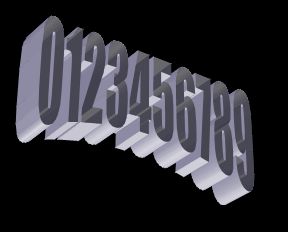Instruction
1
To transfer numbers from binary to decimal system number, you must present it in the form of a polynomial, whose members represent the product of the numbers of each digit of a binary number by 2 in degree n, where n is the number of the discharge, starting from zero. For example, we have binary number 1101001. The figure standing to the right (1) corresponds to a zero bit, the second (0) is the first digit, and so on. Imagine this number in the form of a polynomial: 1*2^0+0*2^1+0*2^2+1*2^3+0*2^4+1*2^5+1^2^6 = 1+0+0+8+0+32+64 = 105. Get the answer in decimal notation.
2
Translations from other systems of notation to decimal is done in a similar way. To translate numbers from the octal system numeral as a decimal, you need to present it in the form of a polynomial, whose members represent the product of the numbers of each digit of the octal number by 8 to the power n, where n is the number of the discharge, starting from zero. For example, the hexadecimal number 125 in the decimal system of notation is translated so: 5*8^0+2*8^1+1^8^2 = 5+16+64 = 85. Get the answer in decimal notation.
3
Completely similarly to the above cases produced converting numbers from the system number from any base to decimal. In hexadecimal, the members of the polynomial represents the product of the numbers of each digit of octal number by 16 to the power of n. You will be able to independently understand how to translate from other systems of notation.
